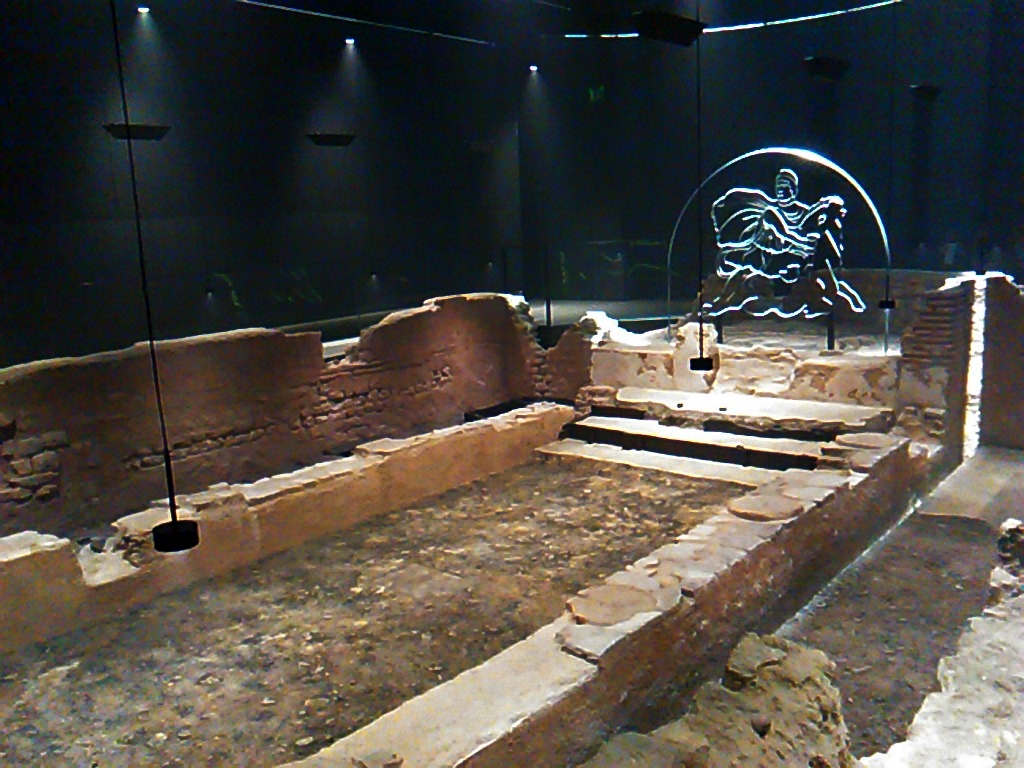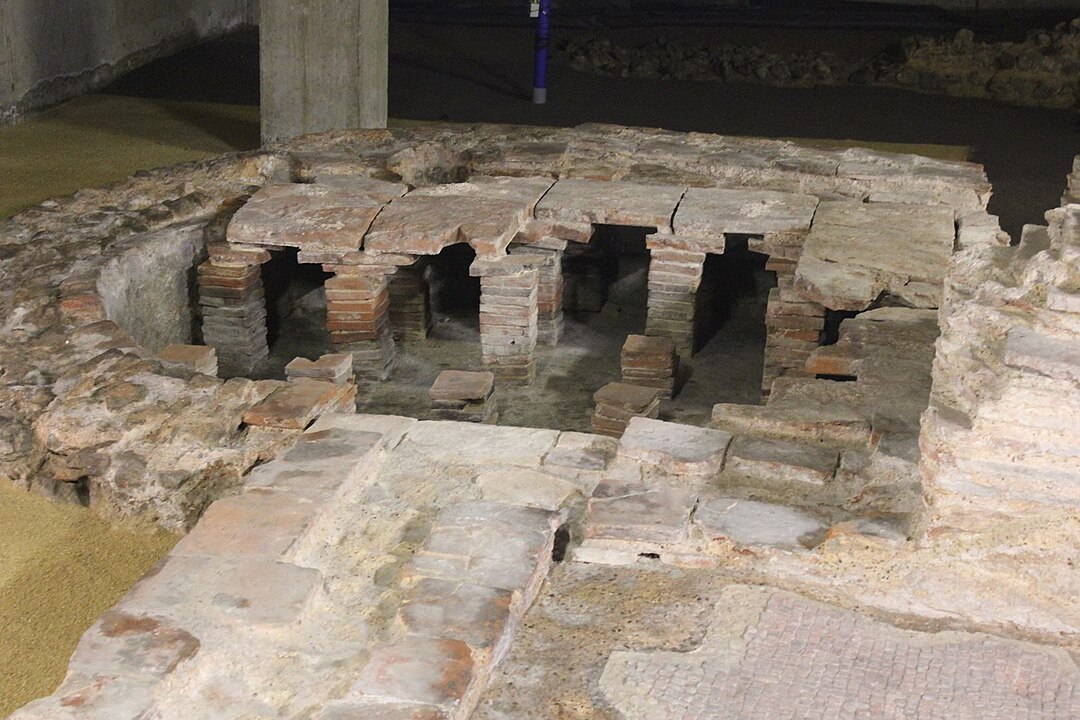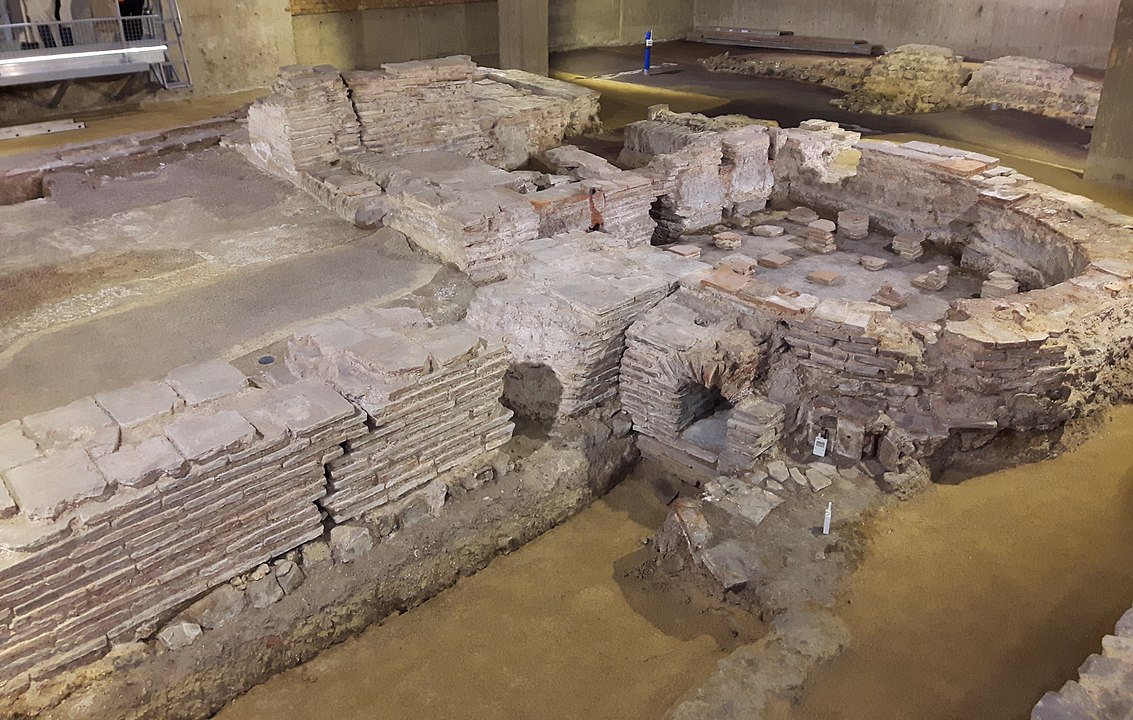Boudica’s Grave Under King’s Cross Station? More Than Unlikely!
If you want to rank the legendary burial places in Britain that have provoked the most speculation, Boudica’s grave will easily rank in the top three. One of the most persistent hypotheses is that the legendary queen of the Iceni tribe, who defied the Roman Empire, lies under King’s Cross station. While the story is alluring, it’s likely a blend of historical misinterpretation and modern fascination. Digging into the facts, there are compelling reasons why this theory doesn’t hold much weight. To understand why, we must first look at Boudica’s revolt, its aftermath, and her lasting legacy in British history.
The Spark That Ignited The Flame: Boudica’s Revolt in 60–61 AD
The Roman occupation of Britain began in earnest in 43 AD under Emperor Claudius. While the initial conquest met with success, resentment simmered among local tribes who found themselves under Roman rule. The Iceni tribe, led by King Prasutagus, enjoyed a degree of autonomy as a client state of Rome, but this arrangement was fragile at best. Prasutagus, hoping to secure his kingdom’s future, left his wealth jointly to his daughters and the Roman emperor in his will. However, upon his death, the Romans ignored his wishes. They annexed Iceni lands, flogged Prasutagus’ widow Boudica, and raped their daughters. This egregious act of brutality triggered an uprising of remarkable proportions.
Boudica rallied not just the Iceni but also neighbouring tribes like the Trinovantes. Their shared resentment of Roman taxation, land seizures, and mistreatment fuelled a fiery rebellion. The Roman governor, Gaius Suetonius Paulinus, was preoccupied with military campaigns on the island of Mona (modern-day Anglesey) at the time, leaving southern Britain vulnerable.
Boudica’s army, which was said to number over 100,000, descended first on the Roman settlement of Camulodunum (modern Colchester). The town, home to Roman veterans and a symbol of occupation, was utterly destroyed. With their defensive walls weak and no reinforcements to aid them, the settlement’s population was slaughtered, and the Temple of Claudius, where survivors had taken refuge, was razed to the ground.
From there, Boudica marched on Londinium (modern London), which, although a fledgling town, was a vital centre for trade and governance. Suetonius, recognising the lack of available troops to defend the city, abandoned it to the advancing rebels. The ferocity of Boudica’s forces was unmatched – they torched Londinium and slaughtered its inhabitants without mercy. Archaeological evidence of this destruction can still be found today, with a thick layer of ash marking the devastation wrought by Boudica’s army.
The town of Verulamium (modern St Albans) suffered a similar fate as Boudica’s forces ravaged the province. By the end of her campaign, an estimated 70,000–80,000 Romans and Britons loyal to Rome had been killed. But this brutal success was short-lived.
Suetonius regrouped with a modest force of about 10,000 men and faced Boudica in a decisive battle, likely somewhere along Watling Street in the Midlands. Though vastly outnumbered, the Romans’ military discipline and superior tactics led to a crushing victory. Boudica’s forces, encumbered by their families and wagons, were slaughtered in a massacre that shattered the rebellion.
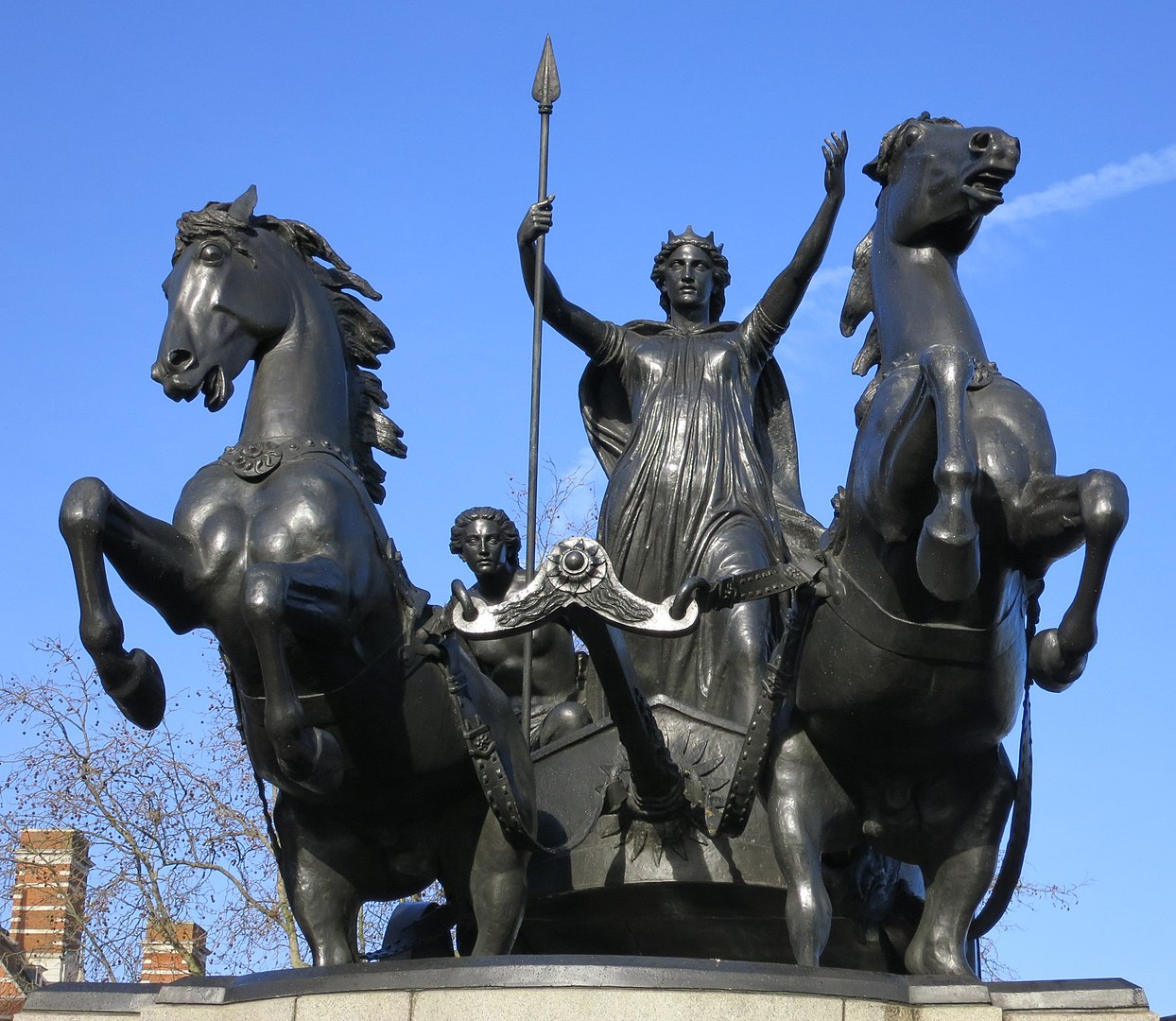
The Making of a Legend: Boudica as a Symbol of British Resistance
Boudica’s defeat didn’t extinguish her story; instead, it lit the flame of her legend. Her struggle against the Romans, though ultimately unsuccessful, captured the imagination of later generations, especially as the concept of a distinct British identity began to take shape.
Boudica’s transformation into a symbol of British resistance can be attributed to several factors. First, there’s the sheer audacity of her revolt. She led a massive uprising that dealt significant blows to Roman control and resulted in the sacking of some of their most critical settlements. Her leadership, especially in the face of personal and national tragedy, showcased the indomitable spirit of the Britons.
Second, she represented a strong, defiant female figure in a patriarchal society. Her story, passed down through the centuries, was later embraced by the Victorians, who saw her embodying British imperialism’s virtues – courage, resilience, and a refusal to be dominated. Queen Victoria was often likened to Boudica, with sculptures of the warrior queen gracing public spaces, including the famous statue near Westminster Bridge.
Lastly, her story tapped into a broader theme of resistance against oppression. Just as the Britons resisted Roman occupation, later generations would draw parallels to their struggles – whether it was against Norman conquerors, the Spanish Armada, or even Nazi Germany. Boudica became a touchstone for defiance and a symbol of the “underdog” standing up to a much more powerful foe.
Comparing Boudica’s Revolt to Other Roman Rivals
While remarkable, Boudica’s revolt against Rome wasn’t the first or the last time the empire faced defiance from those it sought to conquer. Comparisons to other legendary adversaries, such as Spartacus, Hannibal, Vercingetorix, and Decebalus, provide a broader context for understanding Boudica’s role in the wider historical landscape.
A Thracian gladiator, Spartacus led a slave rebellion against Rome between 73 and 71 BC. His uprising, though focused on freeing slaves rather than resisting foreign occupation, similarly showcased Rome’s vulnerability when faced with an unexpected enemy. Like Boudica, Spartacus initially found success, defeating several Roman legions, but he was eventually crushed. Both figures became symbols of resistance, though Spartacus’ fight represented a struggle against the Roman social order, while Boudica’s was a fight for national sovereignty.
The Carthaginian general Hannibal, remains one of Rome’s most formidable enemies. His bold march across the Alps during the Second Punic War and subsequent victories, including the devastating defeat of Rome at the Battle of Cannae in 216 BC, shook the Roman world. Yet, like Boudica, Hannibal was defeated, though his campaign lasted far longer. While Hannibal’s struggle was part of a broader geopolitical conflict between Rome and Carthage, both he and Boudica represent how Rome, despite its strength, could be challenged by brilliant and determined leaders.
Vercingetorix, the chieftain of the Gauls, led a rebellion against Julius Caesar’s conquest of Gaul in 52 BC. Like Boudica, Vercingetorix united various tribes to repel Roman invaders. His stand at Alesia is one of the most famous last stands in Roman history, but, like Boudica, he was eventually captured and defeated. Vercingetorix’s image, like Boudica’s, was later revived as a symbol of national pride – in his case, for the French.
Decebalus, the king of Dacia, fought against Rome in the Dacian Wars during the late 1st and early 2nd centuries AD. His initial success against Emperor Domitian and his resilience against Trajan’s forces make his story akin to Boudica’s. However, after being defeated, Decebalus took his own life rather than submit to Roman capture, a fate that Roman historian Dio Cassius suggested Boudica also shared.
In each case, these leaders were ultimately unsuccessful in stopping Rome’s expansion, yet they all became legendary figures whose stories lived on as symbols of resistance.
The Case Against Boudica’s Grave at King’s Cross
So where does this leave the rumour that Boudica’s grave is beneath King’s Cross station? The idea, though captivating, falls apart under scrutiny.
Roman historian Dio Cassius described Boudica’s end as a tragic but somewhat anticlimactic affair. Following her defeat at the Battle of Watling Street, Boudica is believed to have either succumbed to illness or taken her own life through poison. Dio’s account mentions that she was given a proper burial, but details are scarce, leaving much to the imagination.
The idea that she was buried near what is now King’s Cross first surfaced in the Victorian era when Boudica’s legend was at its peak. King’s Cross was an important junction of London’s expanding railway network, and the area needed a mythic touch to counterbalance the grime of industrialisation. However, there is no archaeological evidence to support this claim.
Furthermore, the proximity of King’s Cross to Londinium, the very settlement she had razed to the ground, would have made such a burial highly unlikely. The Romans were meticulous about how they treated their enemies. It’s doubtful that they would have allowed a figure as infamous as Boudica to be buried near the very heart of their provincial capital. Such a location could have become a rallying point for local resistance, a dangerous symbol of defiance against Roman rule. The Romans, ever pragmatic, would never have permitted her grave to serve as a shrine for future dissenters.
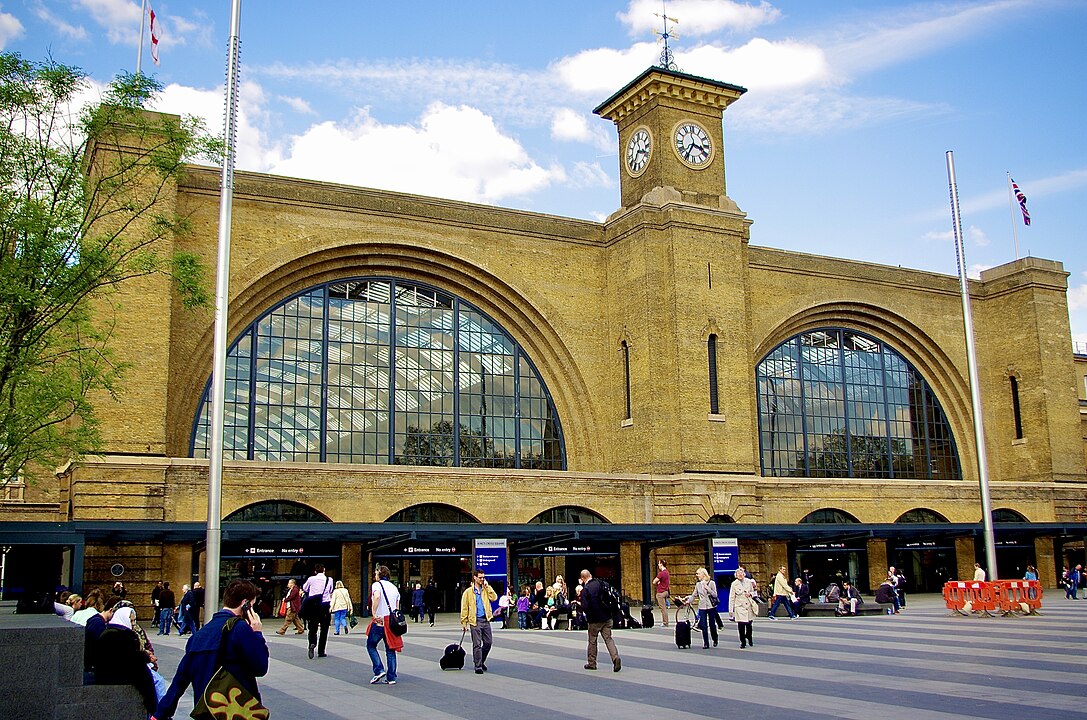
The Elusive Grave: Why We May Never Find It
Many sites associated with her final battle and death have changed drastically over the centuries. Modern development, agricultural use, and the passage of time have obliterated many clues that might have once pointed to her final resting place. The battle at Watling Street remains a matter of speculation, with historians unable to pinpoint its exact location. Some suggest it occurred near Mancetter in Warwickshire, while others argue for Paulerspury in Northamptonshire. These conflicting theories further complicate efforts to locate Boudica’s grave.
Even if we could precisely determine the battle site, finding Boudica’s burial place would be like searching for a needle in a haystack. By Roman accounts, her body was not marked with grandeur, and she was not interred in a way that would be easy to find centuries later. Unlike Roman dignitaries or wealthy Britons, whose tombs were often lavish and adorned with grave goods, Boudica was likely given a relatively modest burial. Without significant monuments or markers, time and nature would have quickly erased the site.
The tendency to romanticise her grave as lying beneath a well-known modern landmark, such as King’s Cross, reflects more about our desire for her story to resonate today than it does historical fact. Fascinated by the blend of ancient history and modern life, Londoners have long been intrigued by the idea that such a powerful symbol of resistance could be beneath their feet. But this fascination risks overshadowing the broader, more realistic possibility – that Boudica was buried somewhere nondescript, far from Londinium and Roman power.
The Roman Attitude Toward Boudica’s Legacy
The Romans were well aware of the power of symbols, especially in a province as volatile as Britain. Allowing Boudica to be buried near a prominent Roman settlement like Londinium would have been a political risk. As a leader who had humiliated the empire, her grave could have become a focus of anti-Roman sentiment. Shrines or burial sites often became places of pilgrimage, and the Romans, who were masters of control, would not have wanted to provide the Britons with a potential rallying point for future rebellion.
It’s worth considering how the Romans dealt with other famous enemies. After his defeat by Julius Caesar, Vercingetorix was paraded through Rome as a prisoner before being executed and discarded. Spartacus, after his rebellion, was likely never given a formal burial at all, with his body lost among the tens of thousands of slaves crucified along the Appian Way. Hannibal, once one of Rome’s most feared enemies, took his own life rather than be captured, and his burial site is only vaguely recorded in historical texts. The Romans had no qualms about erasing the legacies of their foes, ensuring that their deaths did not inspire further resistance. Though slightly more ambiguous, Boudica’s fate likely followed a similar pattern.
The idea that the Romans would have allowed her burial in such proximity to Londinium – a city she had devastated – seems far-fetched. More likely, her body was buried far from any significant Roman site, in an unmarked location, either by her people or under Roman orders. There is even a possibility that, following her death, the Romans desecrated her body to send a message to other rebellious tribes. This would have further reduced any chance of finding her grave today.
The Legend Lives On
Boudica’s grave may never be found; perhaps it is better that way. The mystery of her final resting place adds to the intrigue of her story, allowing her to remain a figure of myth as much as history. While her revolt against the Romans ultimately failed, her legacy has endured for millennia. Whether she lies beneath King’s Cross or somewhere far more obscure, Boudica will continue to inspire and captivate, her story a testament to the power of resistance and the enduring allure of legend.
In the end, it’s not the exact location of her grave that matters most, but what her story represents: the fierce determination of a people to stand against oppression, even in the face of overwhelming odds. And in that sense, Boudica’s spirit will live on wherever she may rest.

